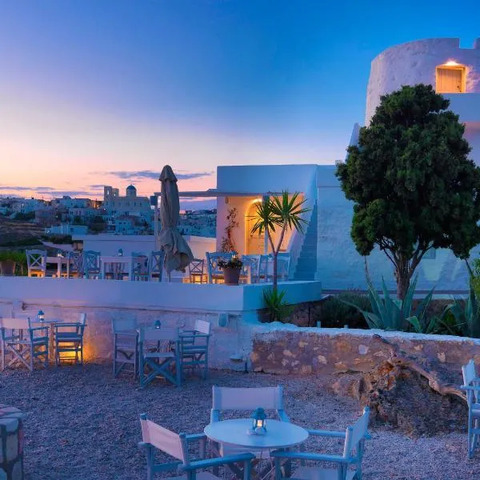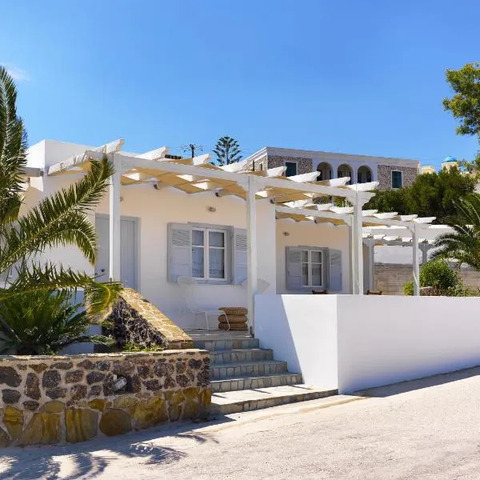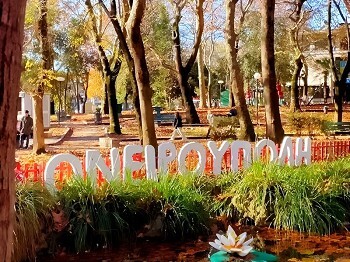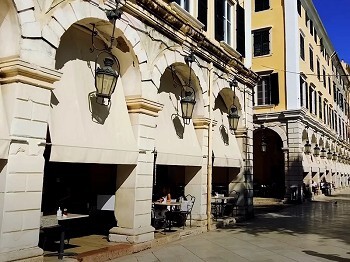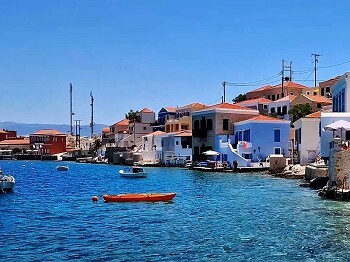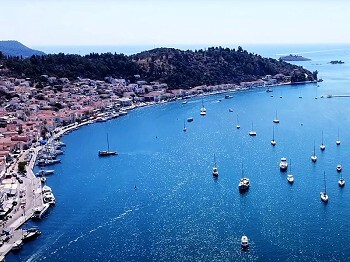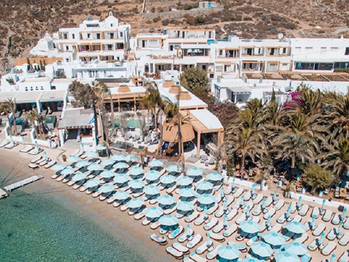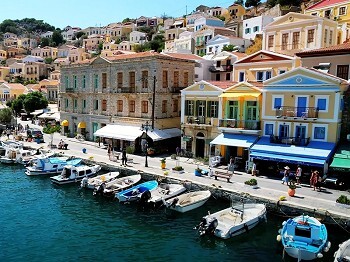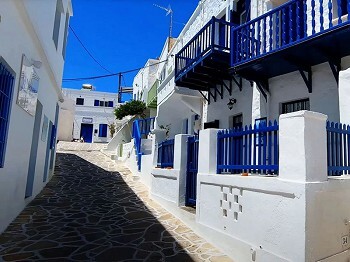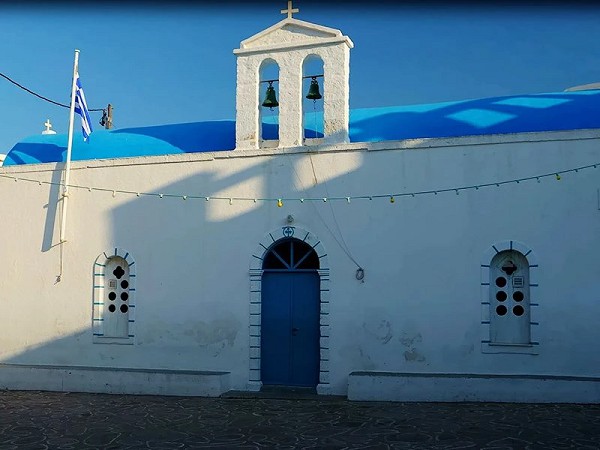
Kimolos Island, a hidden treasure in the Aegean Sea, boasts a wealth of historical sites that transport visitors back in time. This enchanting island, part of the Cyclades, offers a unique blend of ancient history and breathtaking landscapes. For history enthusiasts and curious travelers alike, Kimolos provides a fascinating glimpse into the past. In this article, we’ll explore the top historical sites you must visit on Kimolos Island.
We suggest for your stay:
Still Looking for the Perfect Stay?
1. The Ancient City of Kimolos
Explore the Ruins of a Bygone Era
The ancient city of Kimolos, located near the village of Chorio, is a must-see for anyone interested in the island's rich history. These Ruins offer a window into the life of the island’s early inhabitants. As you wander through the remnants of ancient houses, streets, and fortifications, you’ll gain insight into the urban planning and daily life of the people who once called Kimolos home.
Key Highlights:
Ancient Walls: Well-preserved sections of the city's defensive walls.
Old Houses: Foundations of ancient residential buildings.
Historical Significance: Learn about Kimolos’ role in the ancient Cycladic civilization.
2. The Venetian Castle in Chorio
Discover the Medieval Fortress Overlooking the Island
Perched on a hilltop, The Venetian Castle of Kimolos stands as a sentinel over the island, offering panoramic Views of the surrounding landscape. Built in the 15th century by the Venetians to protect against pirate attacks, this castle showcases medieval Architecture and strategic military design. The fortress walls, towers, and gatehouse are remarkably well-preserved, making it a fascinating site to explore.
Key Highlights:
Panoramic Views: Stunning vistas of Kimolos and the Aegean Sea.
Historical Architecture: Insights into Venetian fortification techniques.
Castle Grounds: Explore the inner courtyards and defensive structures.
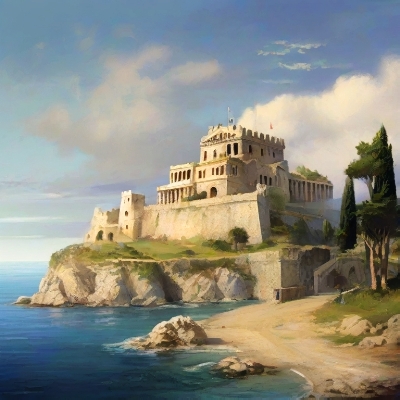
3. The Archaeological Museum of Kimolos
Unearth Artifacts and Learn About Local History
Located in the heart of Kimolos, The Archaeological Museum offers a comprehensive look at the island’s past through its Collection of Artifacts and Exhibits. The museum’s displays include Pottery, Sculptures, and tools from various historical periods. It’s an excellent place to gain a deeper understanding of the island's cultural and historical development.
Key Highlights:
Ancient Pottery: View beautifully preserved ceramic pieces.
Historical Exhibits: Learn about the island’s various historical epochs.
Educational Resources: Detailed explanations of Artifacts and their Significance.
4. The Church of Panagia Odigitria
Visit the Historic Church with Stunning Frescoes
The Church of Panagia Odigitria, located in Chorio, is a beautiful example of traditional Cycladic Architecture. This historic church is renowned for its exquisite Frescoes, which Date back to the Byzantine era. The vibrant colors and intricate details of the Frescoes provide a glimpse into religious art and Iconography of the time.
Key Highlights:
Byzantine Frescoes: Admire the detailed and colorful religious Artwork.
Architectural Features: Explore the traditional design elements of the church.
Religious History: Learn about the church’s Significance in local religious practices.

5. The Old Windmill of Kimolos
Experience the Island’s Traditional Milling History
The Old Windmill, located near the village of Kimolos, is a charming relic from the island’s past. Once used to grind wheat into flour, this Windmill stands as a testament to traditional agricultural practices. The structure, though no longer in operation, is a picturesque reminder of the island’s agrarian Heritage.
Key Highlights:
Traditional Architecture: Examine the windmill’s construction and design.
Historical Context: Understand the role of Windmills in local Agriculture.
Scenic Views: Enjoy picturesque Views of the surrounding landscape from the Windmill.
6. The Ancient Quarry of Kimolos
Discover the Source of Kimolos’ Famous White Stone
The ancient quarry of Kimolos, located on the island’s southeastern coast, is where the famous white stone of Kimolos was extracted. This quarry was a crucial site for the island's economy in ancient times, providing stone for construction and sculpting. Today, visitors can explore the quarry and learn about its Historical significance.
Key Highlights:
Quarry Remnants: Explore the old extraction sites and stone formations.
Historical Impact: Learn about the quarry’s role in ancient construction and trade.
Stone Crafting: Discover how the stone was used in local and regional Architecture.
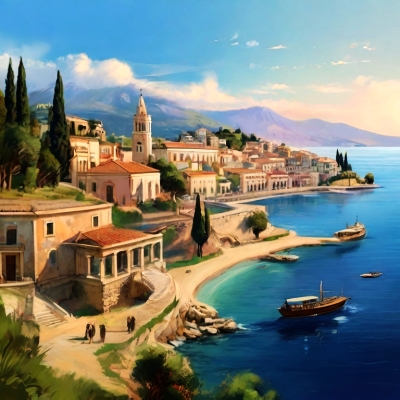
7. The Ancient Theatre of Kimolos
Relive the Island’s Cultural and Theatrical Past
Although not as well-preserved as other ancient theatres in Greece, the remnants of The Ancient Theatre of Kimolos offer a glimpse into the island’s cultural life. This site, located near the ancient city, was once a hub for theatrical Performances and public gatherings. The Remains of the seating areas and stage provide context for the island’s historical entertainment practices.
Key Highlights:
Theatre Layout: See the basic structure of the ancient stage and seating.
Cultural Significance: Understand the role of Theatre in Ancient Kimolos.
Historical Context: Learn about public Performances and events held at the site.
Conclusion
Kimolos Island is a treasure trove of historical sites that reflect its rich cultural Heritage. From ancient Ruins and medieval fortresses to traditional churches and old Windmills, each site offers a unique glimpse into the island's past. Whether you're a history buff or simply curious about this lesser-known Cycladic destination, Kimolos promises a captivating journey through time. Explore these historical Sites to gain a deeper appreciation for the island’s Heritage and enjoy a memorable travel Experience.
Plan your visit to Kimolos Island and step back in time with these fascinating historical sites. For more travel tips and destination guides, stay tuned to our blog!
